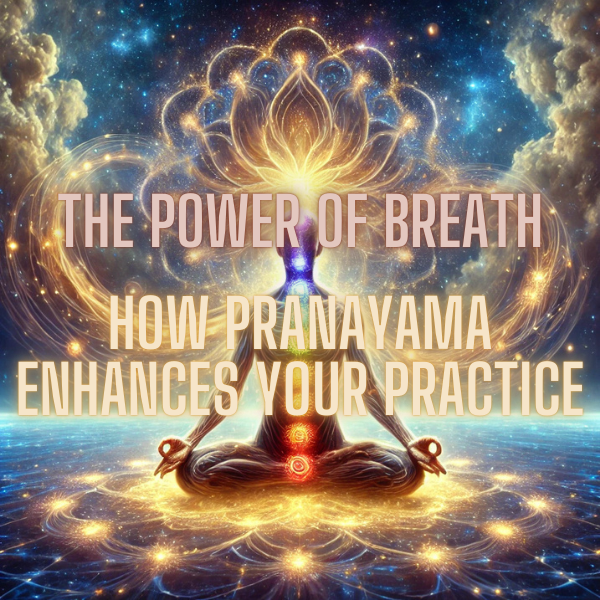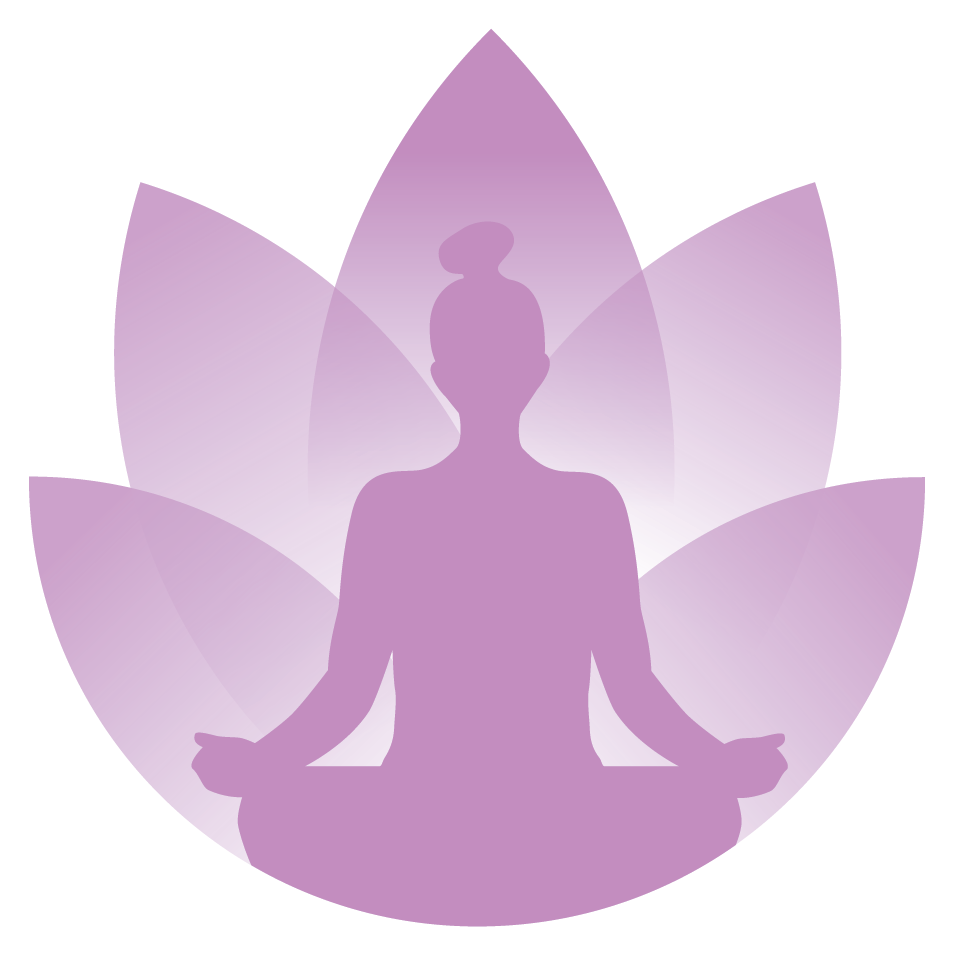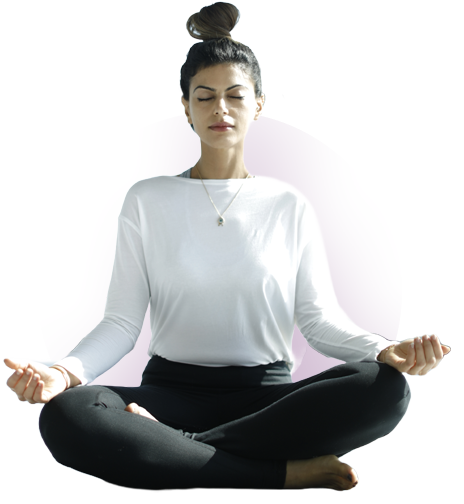The Power of Breath: How Pranayama Enhances Your Practice

How I Went from Avoiding Breathwork to Embracing Its Power
So, let me share my personal story with breathwork. I used to dread breathwork. Every time a teacher guided us to focus on the breath, I’d roll my eyes internally and think, Oh boy, here we go again. I wanted to move, not sit and breathe. I didn’t care for it, didn’t understand it, and honestly, I didn’t want to. Breathwork frelt like the part of class I had to endure to get to the “real” practice.
As time passed and my asana practice deepened, I began to notice something, I was struggling. My breath was short, my movements felt restricted, and poses that once felt accessible suddenly seemed harder. One day, out of sheer curiosity (or maybe frustration), I decided to give breathwork a chance, hoping it might help.
Let me tell you. It absolutely did not.
Not only did I not enjoy it, but it sent me home in tears. I wasn’t sure what had happened, I felt overwhelmed, emotional, and heavy. Something had been stirred, and I didn’t like it. I avoided practice for a week, hesitant to return, not wanting to deal with whatever came up.
But I missed asana. So, I convinced myself to go back, mentally preparing to ignore the breathwork again. Yet, in the middle of class, I found myself struggling once more. My breath was short, my body felt stuck, and frustration set in.
Then came Warrior II—the longest Warrior II of my life. My legs were on fire, my mind was screaming, and I thought, Seriously? Can this get any harder? Just showing up today was hard enough!
And then, something shifted.
Almost instinctively, I lengthened my inhale… deepened my exhale… and suddenly, I felt different. I felt stronger, steadier, more grounded. I held the pose longer and, to my surprise, it actually felt good. I tried the same thing on the other side, same result.
I was shocked.
The very practice I had avoided, the one I had dismissed, had just transformed my experience on the mat. Breathwork wasn’t some abstract concept—it was a game changer.
From that moment on, everything shifted. I no longer skipped breathwork. I no longer rushed out the door when pranayama was taught at the end of class. Instead, I stood strong, breathing deeply, fully present in my body.
And the rest? Well, it led me here.
Now, I am the teacher who guides breathwork, not only at the start of class to help yogis find their center but also at the end, allowing them to sink even deeper into relaxation. The very practice I once resisted has become one of the most powerful tools I share—a reminder, both to myself and to others, that the breath holds the key to strength, presence, and transformation.
And it all started with a single breath.
We often take breathing for granted, it’s an unconscious act, happening effortlessly in the background of our lives. But what if we brought awareness to it? What if we learned to harness the breath with intention?
Breathing is an unconscious act.
Breathing holds the key to profound physical, mental, and spiritual benefits. In the yogic tradition, breath is seen as the essence of life, known as prana, the vital energy that sustains us. Through the practice of pranayama, or breathwork, we can consciously harness this energy, promoting balance, mental clarity, and overall vitality. By learning to regulate our breath, we tap into a powerful tool for reducing stress, enhancing focus, and deepening our connection to both body and mind.
This short blog explores the importance of prana, explores different pranayama techniques, highlights their benefits, and explains how integrating breathwork into your yoga practice can enhance your overall well-being on and off the mat.
So what is Prana? Understanding the life force energy
In Sanskrit, prana means “life force,” and ayama means “expansion.” Once you put the pieces together, pranayama exemplifies the regulation and expansion of life force through the breath. Ancient yogic texts describe prana as the most fundamental energy that flows through all living beings. It is responsible for sustaining life, nourishing the body, and shapes our mental and emotional well-being.
Prana moves through the nadis, or energy channels, in specific centers, or energy wheels called chakras. When this energy moves freely, we experience vitality and well-being. However, when this energy is not moving freely, it results in blockages in the energy flow, which can lead to physical illness, emotional distress, and mental fog. Practicing pranayama ensures that prana moves unimpeded, allowing us to achieve higher states of awareness and inner peace.
The Physiology Behind Breathwork
Modern science has begun to validate what yogis have known for centuries—the way we breathe impacts our nervous system, cardiovascular health, and cognitive functions.
Pranayama Techniques
There are several pranayama techniques, each offering distinct benefits. Here are a few;
-
-
- Activates the Parasympathetic Nervous System: Conscious breathing stimulates the parasympathetic nervous system, reducing stress and promotes relaxation.
- Enhances Oxygenation: Deep breathing increases oxygen supply to the blood, improving brain function and cellular health.
- Regulates Heart Rate and Blood Pressure: Slow, deep breaths help lower heart rate and blood pressure, reducing the risk of cardiovascular diseases.
- Balances Hormones: It influences the release of stress hormones like cortisol, leading to emotional stability.
-
Nadi Shodhana (aka Alternate Nostril Breathing)
-
-
- Balances the left and right hemispheres of the brain
- Reduces anxiety and stress
- Enhances mental clarity and focus
- Purifies the breath
-
Pranayama Technique:
- Sit comfortably with an elongated spine.
- Use the right thumb to close the right nostril and inhale deeply through the left nostril.
- Close the left nostril with the ring finger, open the right nostril, and exhale slowly.
- Inhale through the right nostril, then switch again to exhale through the left.
- Repeat for 5-10 minutes. If you are new, repeat for 3-5 minutes.
Bhastrika (Bellows Breath)
- Increases energy levels and lung capacity
- Cleanses the respiratory system
- Boosts metabolism
Pranayama Technique:
- Sit comfortably with an elongated spine.
- Take a deep inhale through the nose, expanding the diaphragm.
- Exhale forcefully and quickly through the nose.
- Continue rapid inhalations and exhalations for 20-30 seconds, then return to normal breathing.
- Repeat for 3 rounds.
Ujjayi (Victorious Breath)
- Enhances concentration and mindfulness
- Generates internal heat
- Improves endurance and stamina
Pranayama Technique:
- Inhale deeply through the nose, slightly constricting the throat.
- Exhale through the nose while maintaining the throat constriction, creating a soft oceanic sound.
- Continue for 5-10 minutes, maintaining a steady and controlled breath. If you are new, repeat for 3-5 minutes.
Kapalabhati (Skull Shining Breath)
- Detoxifies the lungs and clears the nasal passages
- Energizes the mind and body
- Improves digestion
Pranayama Technique:
- Sit comfortably with an elongated spine.
- Take a deep inhale through the nose.
- Forcefully exhale by contracting the lower abdomen.
- Repeat for 30 seconds, then relax.
- Practice for 3 rounds.
Bhramari (Bee Breath)
- Calms the nervous system and reduces stress
- Enhances sleep quality
- Improves concentration and memory
Pranayama Technique:
- Sit comfortably with an elongated spine.
- Take a deep breath in through the nose.
- As you exhale, create a humming sound, like a bee (bzzzzz).
- Feel the vibrations in your head and chest.
- Repeat for 5-10 minutes. If you are new, repeat for 3-5 minutes.
Integrating Pranayama into Your Yoga Practice
Pranayama is deeply interconnected with asana (physical postures) and meditation. So how do we incorporate breathwork into our yoga routine?
- Breath Awareness: Start your practice with a few minutes of deep, conscious breathing to center yourself and allow yourself to arrive on your mat.
- Synchronize Breath with Movement: Weave your breath (inhales and exhales) with your yoga postures to enhance stability.
- Use Pranayama as a Warm-Up or Cool Down: Techniques like Bhastrika can energize you before practice, while Bhramari can help you unwind after.
- Combine Breathwork with Meditation: After pranayama, sit in silent meditation to absorb the vibration and its calming effects.
So what Are The Benefits Of Pranayama?
- Regular pranayama practice can lead to the following:
- Improved Lung Function: Enhances respiratory efficiency, especially beneficial for athletes and those with respiratory conditions.
- Greater Emotional Stability: Regulates emotions, reducing anxiety, depression, and mood swings.
- Increased Focus and Clarity: Enhances cognitive function, making it easier to concentrate and stay present.
- Detoxification and Healing: Supports the body’s natural detoxification processes, promoting overall health.
Final Thoughts
Breath is the bridge that connects the body, mind, and soul. Pranayama is the gateway to unlocking its true potential. More than just a breathing technique, pranayama is a powerful practice that enhances awareness, boosts vitality, and cultivates deep inner peace. By consciously working with the breath, we can tap into a wellspring of energy, clarity, and balance—transforming not only our yoga practice but our overall well-being.
Whether you’re an experienced yogi or just beginning your journey, incorporating pranayama into your daily routine can be a game-changer. It has the power to calm the nervous system, sharpen focus, and elevate both physical and mental health.
So, breathe in deeply, drawing in life force, energy, clarity, and purpose. Exhale completely, releasing doubt, stress, and anything that no longer serves you. Know that the power is already within you—prana is flowing, ready to be awakened. Embrace it, harness it, and step boldly into your highest potential!



